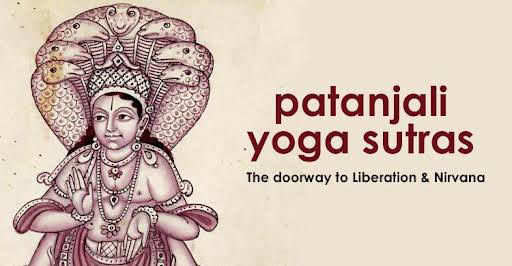patanjali yoga Sutra details
PATANJALI'S YOGA SUTRA
*****************************
Yoga Sutra
What is Yoga Theory?
**************************
Reasoning can sound so dry and irrelevant to the predicaments and choices we face ordinary. Truly however reasoning can assist us with grasping our spot on the planet. Yoga reasoning is profoundly woven into old Indian idea and 'Yoga' is as a matter of fact, the name of an old Indian school of theory. Patanjali's Yoga Sutra is comprised of 196 maxims or terse expressions about yoga. As a matter of fact the word sutra is connected with our promise for stitch and these are short succinct expressions without action words. The sutras in short sum up the hypothesis and practice of yoga.
The sutras are 1600 - 1700 years of age (however this is liable to some discussion). They investigate how to manage the most common way of anguish. The sutras are both a manual for training yet in addition offer a hypothetical comprehension. The specific reason for the assemblage of the sutras has been lost, yet they date from an oral custom, so there is surely material that might be lost to us and generally, the sutras would have been passed from instructor to understudy.
The Sutras are credited to a sage called Patanjali. There are as a matter of fact, three 'Patanjalis' who gathered critical manuals to rise out of old India. Somebody called Patanjali was likewise a grammarian answerable for ordering a word reference of Sanskrit and composed huge works around Ayurveda.
What is the most effective way to figure out the sutras
***********************"""
Generally understudies of the sutras would have worked with an instructor to acquire a comprehension of the sutras. Nonetheless, one more key component of old yogic texts are the analyses that have hence been expounded on them. A similar applies today - working with an educator and alluding to the discourses can assist us with getting a handle on this text.
What's in the sutras🌟
There are four parts (padas) in the sutras. 🌟
Samadhi pada
****************
the main part is worried about thoughtful rapture: in numerous ways this is a definitive objective of yoga. This section likewise contains one of the most incredible known meanings of yoga: Yoga is the suspension of the vacillations of the brain.
The second part of the sutras The sadhana pada is about training. This is the section which offers ashtanga yoga or the eight-limbed way as a manner by which we can carry on with our existences in a manner that lessens our torment. Albeit thoughtful retention stays a definitive objective, Patanjali presents various strategies in which we can plan. These include: study, discipline and commitment. In this section Patanjali recommends that while our brain becomes involved with seeing material states as genuine, a moral way to deal with our life can consistent our psyches.
The third section
*******************
the vibhuti pada is worried about achieving exceptional powers. The section is worried about perpetually unpretentious conditions of contemplation bringing about the fulfillment of extraordinary powers. A portion of these appear to be outrageous and it very well may be challenging to know very how to decipher them: are they illustrations, or did old yogis prepare their brains to acquire an 'elephant's solidarity' and the capacity to see into the idea of the universe and the spot of the stars?
Kaivalya pada.
******************
This section is worried about what happens when 'freedom' or kaivalya is 'accomplished'. This is the point at which the 'purusha' every now and again interpreted as the spirit becomes segregated or freed from 'prakriti' or material life.
A Supernatural getting it
One of the most troublesome components of the yoga sutras for us to comprehend from a 21st century Western point of view is its show of the idea of presence. The psyche is viewed as a piece of the material world and a definitive objective of yoga is to liberate the brain the body from relating to material presence.



Comments